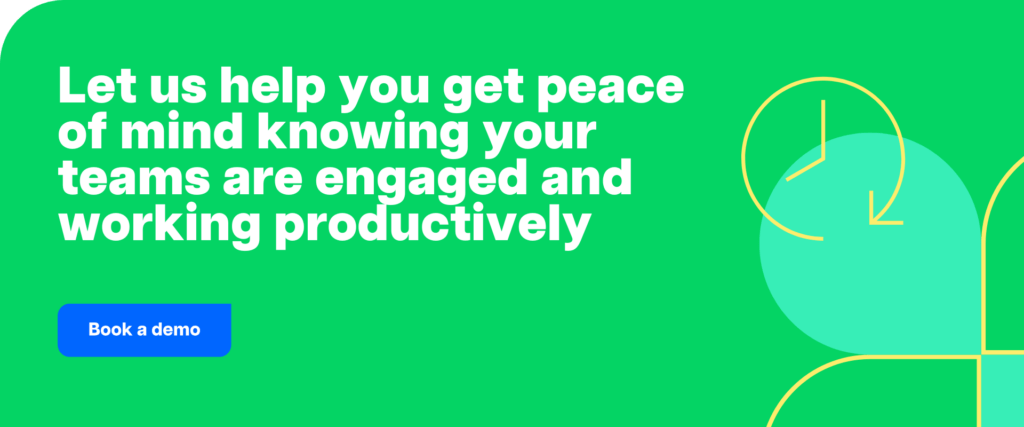Effective people management is more than just an HR responsibility in the fiercely competitive corporate world of today. It is a strategic need. The management of talent and retention are closely related since effective talent management naturally raises staff retention rates, improving organizational performance and stability. The key techniques for developing a successful people management and retention system are examined in this article.
Table of Contents
- What is talent management?
- Understanding retention
- Strategies for effective talent management
- Integrating technology in talent management
- Challenges in talent management and retention
- Future trends in talent management
What is talent management?
Talent management encompasses all organizational processes to attract, develop, and retain skilled employees. It includes three critical components:
- Recruitment: identifying and attracting the right candidates.
- Development: Enhancing the skills and career prospects of employees.
- Retention: Implementing strategies to keep top talent.
Understanding retention
Employee retention is the capacity of an organization to keep its workers from leaving on their own initiative. It’s a crucial sign of how well a company oversees the quality of its general work environment and its workers. Retention is critical since excessive turnover can lead to increased costs for training and hiring, the loss of knowledge and skills, and even disruptions to regular business operations.
What is retention?
Retention in the human resources context refers to the process of maintaining workers’ long-term engagement and commitment to the company. It entails tactics and procedures to lower staff churn while raising loyalty and job satisfaction. Knowing what keeps employees on board and taking proactive measures to meet their requirements are the first steps toward effective retention.

Strategies for effective talent management
A good plan for managing staff is essential if a business wants to succeed in a very competitive field. By focusing on recruitment, growth, and retention strategies, businesses can ensure they not only hire great people but also keep them.
- Recruiting: Getting the best employees is crucial to the growth of a business. Source and selection methods that work, like using social media and specialized recruitment platforms, make it easier to find qualified candidates. Employer branding is important for getting people to apply because it makes the company look like a great workplace.
- Development: To cultivate and develop talent, a corporation must provide opportunities for professional and skill improvement. This means regularly offering training and opportunities for professional development that align with the organization’s goals and the workforce’s needs. By ensuring that workers have a clear direction and opportunity for advancement, career path and succession planning help the firm prepare for the future.
- Retention: To keep good employees, employers need to create a friendly workplace where perks, pay, recognition programs, and the company culture all work together to meet needs. Work-life balance efforts that help employees balance their personal and business lives can also help keep employees longer. Some of these programs include flexible work plans, mental health days off, and the option to work from home.
Effective ways to hire, train, and keep workers are part of sophisticated people management techniques. Long-term success rests on having a workforce that is motivated, happy, and productive. Companies that achieve these goals are more likely to keep their employees.

Integrating technology in talent management
Technology can be used in people management to make the processes of hiring, training, and filling much more effective and efficient. When companies use the right technology, they can make better decisions about various HR jobs, get useful information, and speed up processes.
Technology may help HR managers handle talent by freeing up time for more strategic projects by automating tasks that are done repeatedly, like screening resumes and setting up interviews. You can make better choices with the help of advanced analytics, which can give you deep insights into workforce trends, performance patterns, and retention issues. Technology has also made it easier for teams to work together and talk to each other, which is helpful in mixed or remote work settings.
Examples of tools and platforms that aid in recruitment, development, and retention include:
Recruitment technologies
- Applicant tracking systems (ATS): Platforms like Greenhouse and Lever help streamline the recruitment process by organizing candidate data, automating communication, and facilitating remote interviews.
- AI-powered sourcing tools: Tools like LinkedIn Recruiter and Hiretual use artificial intelligence to find candidates who best match the job requirements, even if they’re not actively seeking new roles.
Development technologies
- Learning Management Systems (LMS): Platforms like Coursera for Business and Udemy for Business offer extensive libraries of courses that employees can use to upskill or reskill.
- Performance management systems: Tools like BetterWorks and Lattice facilitate goal setting, feedback, and performance reviews, which are integral for employee development.
Retention technologies
- Employee engagement software: Programs like Officevibe and Culture Amp use polls to get regular employee feedback and give information about how engaged and satisfied they are with their jobs.
- Wellness and work-life balance apps: Tools like Slack have features for setting limits and ensuring a balance between work and life, while apps like Calm and Headspace offer help with mental health.
The use of technology in labor-management makes HR tasks more effective while also making them easier. By choosing the right tools and platforms, companies can make sure they are ready for the challenges of finding, training, and keeping great employees in today’s fast-paced workplace.
Challenges in talent management and retention
Managing the challenges of employee retention and management in today’s fast-paced company environment is crucial to maintaining a competitive edge. Many obstacles may stand in the way of talent management methods, but with the right strategies, companies may overcome them.
Common obstacles to talent management and retention include:
- Aligning talent management with business goals: Ineffective talent management methods that don’t support the organization’s overall direction might result from HR activities that are frequently not properly matched with larger business objectives.
- Skill gaps: As industries change, there may be a lack of some workers’ skills, which makes it difficult to meet the demands of both present and future businesses.
- Employee engagement and morale: Low morale and engagement can result in high turnover rates, especially if workers feel underappreciated or that their work is not satisfying.
- Adapting to technological changes: Due to rapid technological improvements, constant learning and adaptation are needed, which can put a heavy burden on staff capabilities and resources.
- Cultural misalignment: A company culture that is out of step with the values and expectations of its workers can result in high employee turnover and discontent.
- Budget constraints: Implementing successful personnel management initiatives, such as competitive pay and training, may be hampered by financial constraints.
Strategies to overcome these challenges include:
- Strategic alignment: Make sure that the organization’s strategic goals are in line with all people management activities. This alignment can be facilitated by regular communication between HR and other departments.
- Skills development: To bridge skill gaps, fund training and development initiatives. This helps the company retain staff and gets ready for new difficulties in the road.
- Enhancing employee engagement: Monitor employee engagement frequently and implement programs that increase job satisfaction, such as meaningful work, professional growth opportunities, and recognition schemes.
- Leveraging technology: Make use of the latest resources available to help manage the demands of modern personnel administration. This entails using artificial intelligence (AI) for hiring, digital platforms for staff training, and data analytics for strategic decision-making.
- Cultural enhancement: Establish a work atmosphere that reflects the ideals of the employees. This means operating in a way that reflects the company’s values, being inclusive, and being open and honest in communication.
- Budget optimization: Make the most of your available funds by placing a high premium on people management practices that yield the highest return on investment, such as employee retention and training programs.
Businesses may boost organizational performance and retention rates while simultaneously enhancing their people management initiatives by tackling these issues with focused tactics.
Future trends in talent management
The dynamic nature of talent management is a result of ongoing technological progress, changing demands from employees, and general economic patterns. Remaining ahead of these developments is essential for companies trying to find, nurture, and keep exceptional employees. These new developments in human management and their possible effects are discussed, as well as the significance of flexibility and ongoing learning in this fast-paced setting.
Emerging trends in talent management
- Remote and hybrid work models: It’s clear that more people are choosing to work from home or in a combination of office and home settings. Because of this change, businesses should look at their talent management plan and pay special attention to hiring people from afar, getting them up to speed, and keeping the company culture across all digital platforms.
- Artificial intelligence and automation: AI and automation are slowly being added to some HR tasks, like systems that review employees’ work automatically and keep track of job applications. By streamlining processes and giving data-driven insights, these tools can help people in management make better decisions.
- Employee well-being and mental health: There is an increasing focus on the overall health of employees. Companies are expanding their healthcare packages to include mental health services and wellness programs that promote a healthy work-life balance.
- Diversity, equity, and inclusion (DEI): Increasingly, talent management strategies are centered around DEI programs. Companies are putting a lot of effort into diversifying their workforces because they recognize how important it is to create inclusive work environments that encourage innovation and collaboration.
- Lifelong learning and continuous development: Because job duties and necessary skills quickly change, there is a focus on ongoing learning and development. Upskilling and reskilling activities are becoming increasingly part of talent management strategies to help people prepare for new challenges and career successes.
The importance of adaptability and continuous improvement
Adaptability and ongoing development are more important than ever in reaction to these trends. Companies need to adapt how they modify their talent management plans to fit changing employee expectations and new working practices. This includes:
- Regularly updating policies and practices: For HR policies and procedures to stay effective and up to date, they need to be looked at and changed as needed in reaction to changes in the outside world.
- Embracing technological advancements: If a company wants to be more successful in the personnel management field, it should adopt new technologies, especially those that help with hiring and keeping employees engaged.
- Fostering a culture of learning: Encouraging a culture that values ongoing learning not only helps workers grow as people, but it also makes sure that the company can adapt to changes as a whole.
- Feedback mechanisms: HR projects can be improved and learned from over time by putting in place strong feedback mechanisms. This makes sure that the projects meet the needs and demands of the workforce.
Organizations may be able to maintain a team that is resilient, driven, and adaptive in the future by concentrating on these areas and managing the nature of work more effectively. Sustained prosperity in the ever-changing worldwide business landscape hinges on these endeavors to modify and improve personnel administration approaches.
Conclusion
In today’s fast-paced corporate environment, maintaining a competitive edge in personnel management and retention calls for a comprehensive approach. Crucial strategies include emphasizing employees’ development, engagement, and well-being; using technology to boost productivity; and aligning people management with business goals. Furthermore, it’s imperative to adapt to emerging trends like remote work, AI integration, and a stronger focus on inclusivity and diversity.
Organizations may successfully attract, develop, and retain top personnel, assuring long-term success and stability, by often updating and enhancing talent management procedures and building a culture that emphasizes learning and adaptation.

Andy is a technology & marketing leader who has delivered award-winning and world-first experiences.


